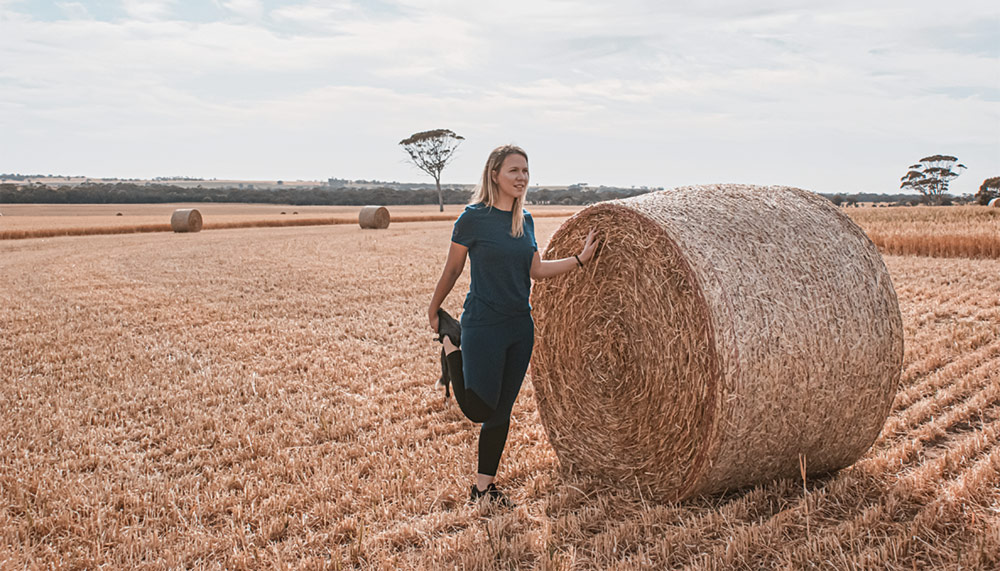Based in the WA Wheatbelt, Lana Vello is creating attractive activewear from merino wool.
Story John Dunn Photo courtesy Mikahla Wells
The colours are big and bold out west, as the seemingly never-ending plains roll away from Perth to form one of Australia’s great granaries, the wonderful WA Wheatbelt. Against a background of ochre earth, fresh green stalks early in the year give way to harvest gold beneath a basalt-blue sky. Here and there a smudge of beige indicates kangaroos and echidnas, southern scrub robins and chestnut thornbills.
Brought up in the heart of this agriculturally attractive country, on a mixed farm at Wyalkatchem, Mikahla Wells, 28, is so inspired by these tints and tones that she is creating a range of activewear that’s informal but can also be dressed up. Mikahla went to boarding school in Perth and then completed a degree in Zoology at the University of Western Australia, but her heart and soul remained on the farm. “That’s where I wanted to be,” she explains. “I wanted to do something on my own, something that would bring the beauty and energy of the Wheatbelt to the rest of the nation and, hopefully, beyond. I’m inspired by country life and I’m also passionate about exercise and being active. We have Merinos and I love the softness of their fleeces, so my husband Mitchell suggested I work with wool and have a go at combining all these factors into an athleisure business.”
Thus, Lana Vello was born. The name means ‘wool and fleece’ in Italian and was chosen by the couple because “they were words that are feminine and strong,” Mikahla says.
She spent 18 months researching and developing her dream in a converted garage on a wheat and sheep property owned by Mitchell’s family near York. “It was very difficult,” she admits. “However, I believed in my idea and was determined to see if it would succeed. I wanted to use merino wool because of the many qualities it possesses. It reacts to your body temperature, it’s soft on the skin, has natural elasticity, provides protection from the sun and absorbs moisture, so there’s less sweat. My ultimate aim is to involve the wool that’s grown on our property or in the district.”
This story excerpt is from Issue #144
Outback Magazine: August/September 2022










